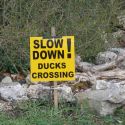The brave neighbour across the road is high up in the olive? tree with a long stick shaking down the highest of the fruit. He of the mixed orchard - lemons and oranges and quite probably other varieties not visible from the road. The lot is pretty densely treed but there are paths and some open spaces and it’s also home to more than one goat which we hear regularly but have yet to see. Goats presumably related to the ramshackle constructions used for shelter or feeding.
‘Inside the rounded fruit of a fig tree is a maze of flowers. That is, a fig is not actually a fruit is an inflorescence—a cluster of many flowers and seeds contained inside a bulbous stem. Because of this unusual arrangement, the seeds—technically the ovaries of the fig—require a specialized pollinator that is adapted to navigate within these confined quarters. Here begins the story of the relationship between figs and fig wasps.
The queen of the fig wasp is almost the perfect size for the job—except, despite her tiny body, she often times will lose her wings and antennae as she enters through a tight opening in the fig. “The only link the fig cavity has to the outside world is through a tiny bract-lined opening at the apex of the fig, called the ostiole, and it is by means of this passage that the pollinating fig wasp gains access to the florets,” as described in Figweb, a site by Iziko Museums of Cape Town.
‘Once inside, the queen travels within the chamber, depositing her eggs and simultaneously shedding the pollen she carried with her from another fig. This last task, while not the queen’s primary goal, is an important one: She is fertilizing the fig’s ovaries. After the queen has laid her eggs, she dies and is digested by the fig, providing nourishment. Once the queen’s eggs hatch, male and female wasps assume very different roles. They first mate with each other (yes, brothers and sisters), and then the females collect pollen—in some species, actively gathering it in a specialized pouch and in others, accumulating it inadvertently—while the wingless males begin carving a path to the fig’s exterior. This activity is not for their own escape but rather to create an opening for the females to exit. The females will pollinate another fig as queens. The males will spend their entire lifecycle within a single fruit.’


